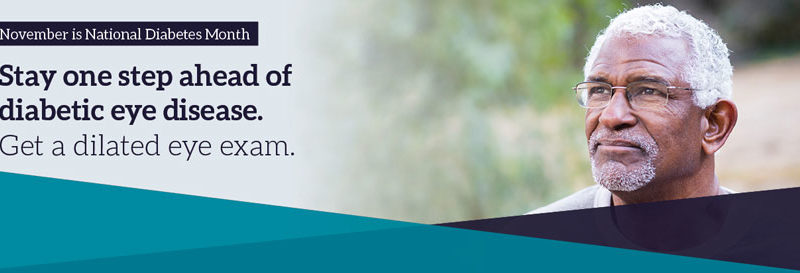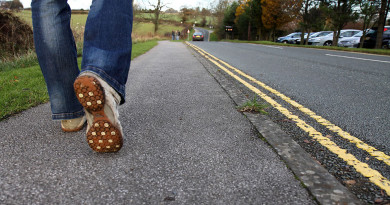Diabetes and Your Eyes. Don’t Forget Your Yearly Eye Exams.
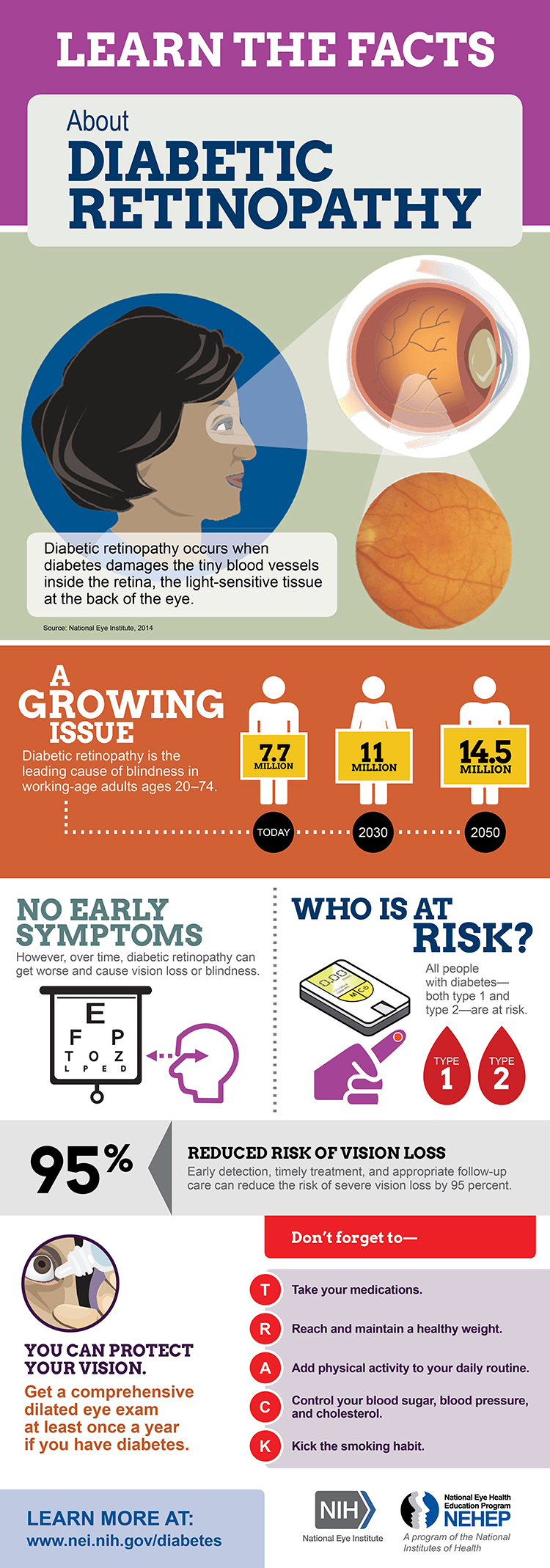 Diabetes can cause eye problems, over time this can even lead to blindness unless you take precautions. All people with diabetes, types 1 and 2, are at risk. The longer a person has diabetes, the higher the risk for diabetic eye disease. African Americans, American Indians/Alaska Natives, Hispanics/Latinos, and older adults are at higher risk for losing vision or going blind from diabetes. Unfortunately, many people with diabetes do not have eye exams or not aware that they need yearly eye exams.
Diabetes can cause eye problems, over time this can even lead to blindness unless you take precautions. All people with diabetes, types 1 and 2, are at risk. The longer a person has diabetes, the higher the risk for diabetic eye disease. African Americans, American Indians/Alaska Natives, Hispanics/Latinos, and older adults are at higher risk for losing vision or going blind from diabetes. Unfortunately, many people with diabetes do not have eye exams or not aware that they need yearly eye exams.
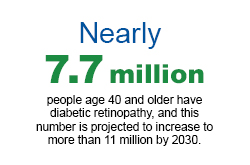
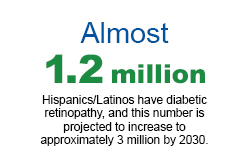
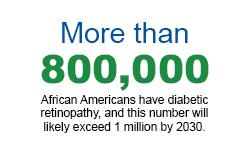
Diabetic eye disease is a group of eye problems people with diabetes may face as a complication of the disease, which can lead to vision loss or blindness. These eye problems include:
Diabetic Retinopathy
Diabetic retinopathy is damage to the blood vessels in the retina. It is the most common form of diabetic eye disease and is also the leading cause of blindness in the United States. During the initial stages of retinopathy, you may not have any vision changes but over a period it can slowly lead to vision loss. It usually affects both eyes. In some people with retinopathy, blood was also may swell and delete fluid. In other people, abnormal new blood vessels cut on the surface of the retina.
Read more about Diabetic retinopathy HERE
In addition to diabetic retinopathy, there are other eye health problems that those with diabetes are at higher risk of having.
Diabetic macular edema (DME): In DME, fluid builds up in the middle part of the retina which is vital part of the eye for focusing eyesight. The swelling from fluid buildup can cause loss of vision. About half of all people with diabetic retinopathy will also get DME.
Cataracts: Cataracts occur when the lens of the eye becomes cloudy and starts to block light, causing vision loss. You have higher chance of getting cataracts if you have diabetes. Also, if you have diabetes, cataracts can start at a younger age and grow more quickly.
Glaucoma: People with diabetes also are more likely to get glaucoma. This is when pressure builds up in the eye. This pressure causes damage to the vessels that carry blood to the optic nerve and retina. It can cause blindness.
The treatments for all of these diabetic eye diseases are most effective when started early.
Be Proactive
• If you have diabetes, it’s important to keep your health on TRACK:
Take your medications as prescribed by your doctor.
Reach and maintain a healthy weight.
Add physical activity to your day.
Control your ABC’s—A1C, blood pressure, and cholesterol levels.
Kick the smoking habit.

• People with diabetes should get a comprehensive dilated eye exam at least once a year.
A dilated eye exam is when an eye care professional puts drops in the eyes to dilate, or widen, the pupils in order to examine the back of the eyes for signs of disease.
• Diabetic eye disease often has no warning signs, but it can be detected and treated early, before noticeable vision loss occurs.
• With early detection, timely treatment, and appropriate follow-up, the risk of severe vision loss from diabetic retinopathy can be reduced by 95 percent.
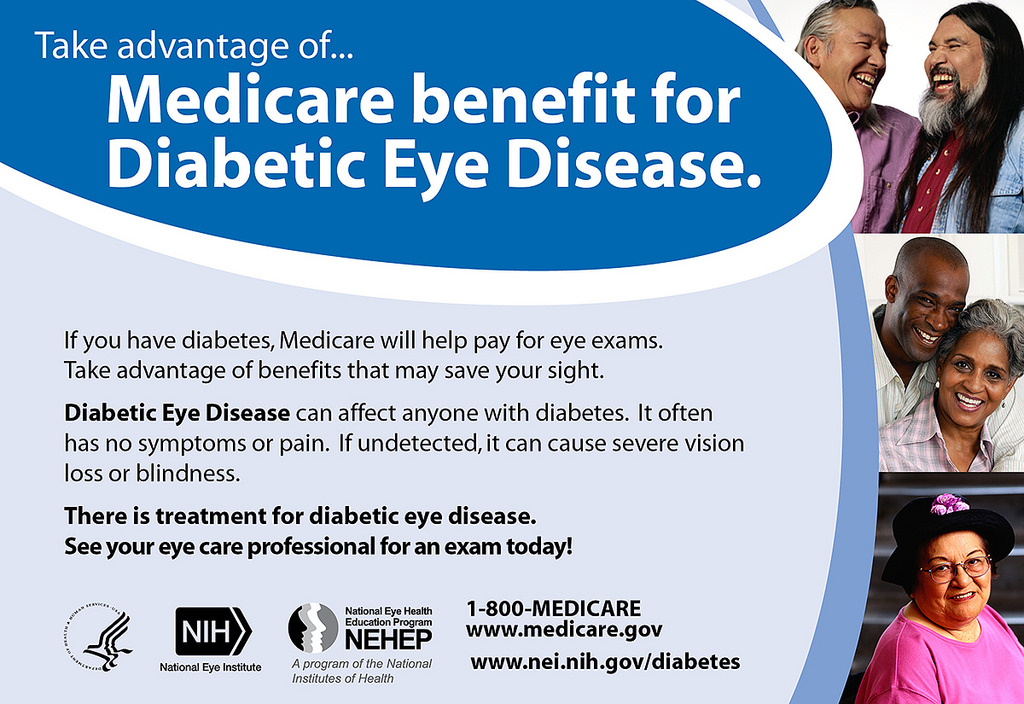
Source: NIH.
- Adolescents Living With Diabetes - August 6, 2022
- Diabetes Insipidus Symptoms, Causes, & Prevention - July 26, 2022
- Insulin Shortage May Affect Almost Half of the Diabetics by 2030 - November 24, 2018

